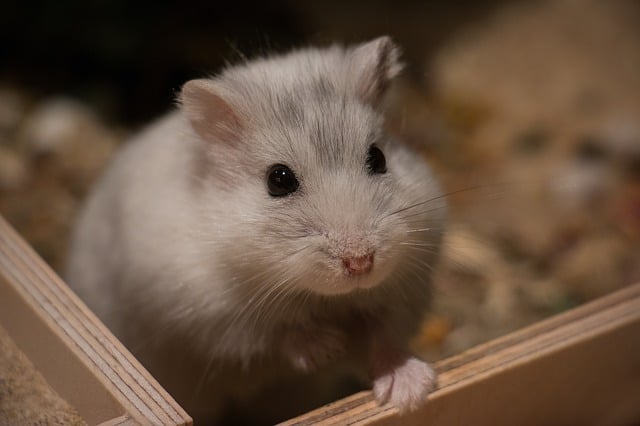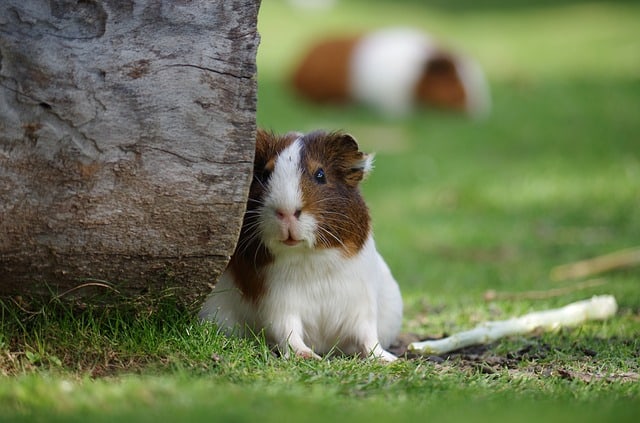
Hamster taming regardless of its breed, sex and character require from the owner not only gentleness, patience, and regularity, but also the right approach and the use of several methods, which will allow the animal to get used to and learn the new urban environment, people, smell, food, cage and what is in it.
Table of Contents
Hamsters are one of the most pressure pet rodents on the planet, their sodality and not the same capacious muzzle can fill twice as much energy than the hamster’s head itself. is an amazing furry friend who will always want to turn a corner at night.
Because of his size, he is very sensitive and afraid of socializing with new people because of his survival instinct but, once he does, he becomes one of the sweetest of your furry companions. Hamsters do not like sudden loud noises or movements. Your hamster will trust you if they know that you are gentle and soft-spoken.
Take care of the habitat

The basic rules to make sure your hamster likes you are:
- Give your hamster time to get to know the new cage.
- For the first few days, you should limit your hamster’s activities to feeding and cleaning only.
- It is best to choose an evening time to work with your hamster.
- Before touching the rodent should wash your hands, especially if you have had contact with other animals.
- Movements made with the hamster should be calm and gentle, you should avoid violence.
- To the rodent should be spoken in a pleasant and friendly voice, so that he gets used to its sound.
- In the presence of a hamster must not scream, squeal, laugh.
- The rodent can be encouraged to interact with a treat.
- A hamster must not be grabbed from above.
- The pet should only be handled by one person at a time.
- Once you have planned to buy a hamster, it is better to start with the place where it will be located and first help it to get used to its new place, you can start by preparing the place by :
- Installing the wheel. Make sure it is big enough because a small wheel can hurt your hamster’s back.
- Give your hamster chew toys. Wood is ideal because they can chew on it. Check to see if your pet store carries it.
- Give him fresh vegetables. Cucumber, carrots, and lettuce are good. See what your hamster likes and dislikes.
- Let your hamster take a ride on an exercise ball. This is a great way to get your hamster out of the cage for a while in a safe manner. Make sure you do not keep her in the ball for more than twenty minutes.
- Give your hamster old toilet paper rolls. My hamsters love to crawl inside them and chew on them.
- Add unscented tissue paper to the cage. Hamsters like to tear it up and add it to the nest for comfortable bedding.
- These are the basic rules you should follow and slowly observe how your little friend behaves.
Cage

Make sure your hamster has a properly sized cage, preferably with several floors and plenty of room to run around. Wild hamsters run for miles and miles every night, and if she has enough space, she will be happy.
Unfortunately, in many cages, the door is at the top. Its trust must be gained slowly. After a while, he will allow you to touch him without giving him a treat. The hamster will begin to watch you and will come forward when you approach the cage. Stroke him gently on the sides and back. If he responds calmly to your touch for an extended time, you can carefully pick him up.
Regularly take care of it

Establish a routine of trying to change water and food every day, but don’t touch her yet. Don’t worry if she is surprised at first. She will begin to get used to your hands going in and out of the cage and learn that your presence means fresh water and new food.
Add tissue paper or extra bedding if needed. Do this at the same time each day if you can. Late evening is ideal because hamsters are more alert at night. She will start to get used to you showing up each day to give her fresh food and water, and you may start to see her come out of the nest to watch you or run to the food bowl as soon as you are done.
Let him come to you

You must let your hamster come to you. Do not chase it or forcefully catch it, as it may become frightened and bite. Wash your hands thoroughly first. Put a snack on your hand and lay it flat in the cage. She may come and sniff your fingers, and she may nibble; don’t be surprised if she does. She is probably testing if you are food.
If you’re lucky, she may immediately crawl onto your hand and eat the treat. He may sniff your fingers and then ignore you, which is also fine. Place the treat closer to the edge of your hand, where she can reach it more easily. She may not be comfortable crawling on your hand yet.
Do not:
- Certainly not rub
- Catch/grasp it
- Make sudden and quick movements
- Make loud noises
- Move/teleport/the cage while he is in it
When it feels comfortable sitting on your hand, gently stroke it with your free hand. After doing this two or three times in a few days, try to bring her out of the cage still on the top of your hand.
Take the hamster in your hands by grasping it mid-torso. Create a basket with your hands to keep the hamster from falling to the floor. It is important not to tire the hamster, do not stroke it forcibly, or immediately pass it to other people. This is too much of a shock for him at first. Limit contact with the hamster to your person. Take him out of the cage for up to 10 minutes.
Take it for a nut and an apple

Take a piece of apple or walnut (or carrot they love) and put your hand in the cage. Wait until your hamster comes to you. At first, he may take the treat from your hand and consume it secretly, but over time he will eat from your hand.
Your movements should be calm and gentle. Under no circumstances should you grab the hamster! This may cause the hamster to back away and not want to approach again. Never grab a hamster from above – this is associated with a predator attack and hamsters will always be afraid of such a grab!
Play with it

The market for hamster stuff is very rich and varied. Despite this, items that are suitable for pets make up only a small percentage of what you will come across in pet stores. Vibrant colors and the supposed usefulness of some hamster toys encourage people who are not very familiar with pet accessories to buy them. Usually in this case appearances are deceiving.
Running Balls
Plastic running balls are one of the worst options you can come across when looking for something for rodents. What makes a ball worthy of being called a dangerous hamster toy?
The small surface area of the balls does not allow hamsters to feel comfortable in them.
Balls have very poor ventilation.
A speeding ball is too difficult to maneuver properly. As a result, the hamster bumps against objects in the house, which causes the hamster immense discomfort.
Mini-prison – the hamster has no way of leaving the ball and can only be freed from it by its owner.
Many people buy crutches thinking that the hamster will enjoy getting to know the house through it. The only thing the animal has a chance to feel or see is the inside of the plastic ball.
Reels, or the perfect toys for a hamster

The reel is a toy and at the same time an essential piece of equipment in the cage. Hamsters are very active animals and therefore need their own “treadmill”.
You must remember to choose the size of the toy:
accessories for the Syrian hamster should have a diameter of about 28 cm.
Jungle hamsters, on the other hand, need slightly smaller reels, with a diameter of about 21 cm.
Most veterinarians recommend that you choose reels with a smooth surface, without bars, so that the fun does not end up very dangerous for hamsters’ injuries. Wooden reels are especially recommended.
Houses, or other wooden hamster toys
Toys for the Jungar hamster, as well as any other breed, also include houses. Among the most recommended are those made of unpainted wood. It is worth paying attention to the entrance. It should be large enough so that the hamster does not inadvertently get stuck in it.
Tunnels

Providing hamsters with tunnels will be a very good idea, as the animals love to hide in them. What kind of hamster toys of this type to choose? There are tunnels on the market made of hay, wood, wicker, and plastic. Try to look for those that are created from natural materials.
Grills, or useful toys for rodents

Chews are great toys for the Syrian hamster and other breeds. This is because they are useful and also help the animal in rubbing their teeth. They work best in this role:
- pear and hazel twigs;
- dandelion roots;
- Jerusalem artichoke.
